Whispers of legendary Vikings and their daring raids across icy seas have echoed through time, captivating our imaginations for centuries. Among those figures, Ragnar Lothbrok stands out, a name synonymous with Viking prowess and shrouded in an alluring blend of myth and history.
Ragnar Lothbrok: Unraveling the Enigma of a Viking Legend
Emerging from the mists of 9th-century Scandinavia, Ragnar’s story is a tapestry woven from threads of daring raids, grand conquests, and captivating drama. Imagine, if you will, longships laden with fearless warriors, their axes glinting under the northern sun as they descend upon the coasts of England and France. Ragnar, a fearless leader with an insatiable thirst for adventure, is said to have led his men across vast distances, amassing incredible wealth and striking fear into the hearts of kings.
His exploits, passed down through generations in epic sagas, often blur the lines between fact and fiction. Did he truly exact revenge upon King Ælla of Northumbria by casting him into a pit of venomous snakes? Did Ragnar’s fleet truly sail up the Seine, laying siege to Paris and extracting a hefty ransom from the Frankish king? Did Vikings attack Paris twice? While historians debate the absolute truth of these tales, one thing remains undisputed: the legend of Ragnar Lothbrok looms large in the Viking Age.
Adding to the intrigue, Ragnar wasn’t alone in his endeavors. He fathered a lineage of sons, some even more renowned than himself. Names like Ivar the Boneless and Bjorn Ironside still resonate with a potent mix of awe and trepidation, each carving their own bloody path through history, seemingly inheriting their father’s ambition and thirst for conquest. Together, they represent a pivotal force, shaping the Viking world, expanding its reach, and leaving an indelible mark on the course of history.
Despite the vivid picture painted by the sagas, historians seek tangible proof to unravel the enigma of Ragnar’s existence. Recent archaeological discoveries, such as ancient runestones etched with cryptic messages and remnants of Viking settlements, offer tantalizing clues about Ragnar and his era. Like pieces of a giant jigsaw puzzle, these findings ignite impassioned debates among experts, fueling the fire of Ragnar’s enigmatic life.
The tale of Ragnar Lothbrok is a thrilling journey through a time of swords and shields, of longships navigating treacherous seas. It’s a realm where history and myth entwine, where the line between fact and fiction blurs, reminding us that centuries later, the legend of this fearless Viking raider continues to fascinate and inspire.
Was Ragnar Lothbrok a Real Viking?
The legendary Ragnar Lothbrok, a figure who seems to have sprung from epic sagas into modern-day pop culture, begs the question: did this larger-than-life Viking actually exist, or is he merely a product of vivid storytelling? For centuries, historians have grappled with this very question, meticulously poring over ancient texts and artifacts, attempting to separate the man from the myth.
There’s no denying the existence of historical records that mention a Viking named Ragnar wreaking havoc across England and France in the 9th century. The Anglo-Saxon Chronicle, for instance, details Viking raids that align with the timeline of Ragnar’s supposed exploits. Furthermore, archaeological evidence, such as the plundered Lindisfarne Gospels and the awe-inspiring Sutton Hoo ship burial, points to significant Viking activity during this period.
However, the Norse sagas, filled with fantastical tales and superhuman feats, complicate matters. Ragnar is portrayed as an almost mythical figure, a cunning warrior who outsmarted his enemies, amassed unimaginable wealth, and even faced off against mythical sea serpents. His dramatic demise in a snake pit and his sons’ subsequent quest for vengeance embody the essence of saga storytelling.
So, how do we reconcile these seemingly disparate narratives, one grounded in historical record and the other steeped in myth and legend? It’s a challenge that continues to fascinate and frustrate historians today. It’s likely that a Ragnar Lothbrok did exist, a Viking chieftain of substantial influence who led daring raids across the seas. The historical record supports this notion. However, it’s improbable that he accomplished all the extraordinary feats attributed to him in the sagas. Storytelling, especially oral tradition, is prone to exaggeration, and over time, the real-life exploits of Ragnar Lothbrok likely became intertwined with embellishments, creating the legendary figure we recognize today.
The debate surrounding the “real” Ragnar Lothbrok is far from settled. Historians continue to unearth new clues and debate the validity of existing sources, striving to get closer to a definitive answer. Perhaps we will never have all the pieces to solve this historical puzzle, but it is this very ambiguity that makes the study of Ragnar Lothbrok so captivating.
Who was Ragnar Lothbrok killed by?
The legend of Ragnar Lothbrok’s demise is as captivating as the tales of his conquests, often depicted as a brutal execution at the hands of his enemies. According to these accounts, Ragnar met his end in a pit of venomous snakes – a gruesome spectacle intended to make an example of the mighty Viking.
The finger of blame for this act is frequently pointed at King Aella of Northumbria, a ruler who had a contentious history with Ragnar. Fueled by the belief that Aella was responsible for the death of his son, Bjorn Ironside, Ragnar reportedly led a retaliatory fleet to Northumbria, seeking to avenge his son’s death. However, Aella’s forces proved too strong, resulting in Ragnar’s capture and his infamous execution.
Driven by grief and rage upon hearing of their father’s fate, Ragnar’s sons, including the formidable Ivar the Boneless, assembled the “Great Heathen Army,” a force of Viking warriors determined to unleash their wrath upon England. Their campaign of vengeance left a trail of destruction and cemented their place in Viking legend.
Although the story of Ragnar’s demise is a popular one, historians remain divided on its authenticity. While there’s strong evidence suggesting Ragnar’s existence and his participation in raids like those recounted in the sagas, the snake pit execution is viewed with more skepticism. Some historians believe this detail was a later addition, a dramatic embellishment designed to emphasize Aella’s ruthlessness and amplify the tragic nature of Ragnar’s death.
Whether or not the snake pit execution holds historical accuracy, the impact of Ragnar Lothbrok’s story on our collective imagination is undeniable. This tale of bravery, vengeance, and ultimately, tragedy has captivated people for centuries, reflecting our enduring fascination with Viking culture and their legendary exploits.
How Many Sons Did Ragnar Have in Real Life?
Ragnar Lothbrok, a name synonymous with epic tales of Viking raids and conquests, often sparks debate regarding his offspring, particularly his sons. The sagas, those captivating narratives passed down through generations, tell of five sons who left their mark on history: Bjorn Ironside, Ivar the Boneless, Ubbe, Hvitserk, and Sigurd Snake-in-the-Eye. Each of these figures grew to become a force to be reckoned with, leading armies and expanding Viking influence across the land, much like their legendary father.
However, pinpointing the absolute truth about these individuals and their connection to Ragnar is a task wrought with complexity. While these sons are indeed recognized as historical figures who accomplished significant feats, the exact nature of their lineage remains a subject of debate among historians. Some hypothesize that the Ragnar Lothbrok depicted in the sagas might be an amalgamation of multiple historical figures, their exploits and characteristics blended over time to create a singular, legendary persona.
The nature of oral history, particularly when spanning generations, allows for embellishments and alterations. It’s plausible that over time, as stories of various Viking leaders and their accomplishments were passed down, they merged, ultimately forming the larger-than-life figure of Ragnar Lothbrok. This theory doesn’t diminish the accomplishments of his supposed sons; rather, it adds layers to their stories, suggesting they may have been inspired and shaped by a powerful figure, perhaps someone like the Ragnar of legend.
So, did Ragnar father five sons? While historical certainty is elusive, it is probable, given the evidence we have. What we can say with confidence is that the sons attributed to him were influential figures in their own right, and their stories are interwoven in ways that continue to fuel historical research and debate.
How old was Ragnar when he died?
Determining the exact age of Ragnar Lothbrok at the time of his death is a surprisingly difficult endeavor, akin to grasping at shadows. Historical estimates place his birth between 783 and 810 AD, leaving a significant margin for error.
However, most historical accounts agree that Ragnar’s life ended somewhere between 852 and 856 AD. If we were to calculate based on these dates, it suggests that he was likely in his early fifties when he met his demise, somewhere between 51 and 55 years old. Given the harsh realities and inherent dangers of life as a Viking warrior, reaching such an age could be considered a testament to his resilience and fortitude.
Of course, no discussion about Ragnar’s death would be complete without mentioning the legendary snake pit. This vivid tale, describing his execution in a pit filled with venomous serpents, is as captivating as it is gruesome. However, historians approach this detail with a healthy dose of skepticism. While some entertain the possibility of its validity, others believe it’s more likely that Ragnar perished in battle or succumbed to illness. The snake pit, they argue, could be a later embellishment, enhancing the dramatic arc of his story.
The passage of time often obscures the full truth, leaving us with fragments of evidence and a tapestry woven from both historical fact and captivating legend. New discoveries continue to emerge, adding pieces to the puzzle of Ragnar Lothbrok’s life and death. Perhaps one day, we will gain a clearer understanding of this enigmatic Viking and his final days, but for now, the mystery endures.
Was Lagertha a Real Person?
The image of Lagertha, a fierce Viking shield-maiden and Ragnar Lothbrok’s wife, has captivated audiences, but was this captivating figure based on a real person, or is she a product of legend and imagination? Historians, for the most part, remain skeptical about her existence as a historical figure in her own right.
The prevailing theory among scholars is that Lagertha, as we envision her, is likely an amalgamation of several real-life Viking women, their stories and characteristics blended over time to create a singular, enduring character. It’s important to remember that during the Viking Age, women warriors, known as “shield-maidens,” were not unheard of. They were renowned for their strength, courage, and fighting prowess, often standing shoulder-to-shoulder with their male counterparts. It’s conceivable that tales of these formidable women became intertwined, eventually evolving into the legend of Lagertha.
Certain aspects of Lagertha’s story, such as her marriage to Ragnar Lothbrok, resonate with historians as potentially rooted in actual events. However, these same historians caution against taking the sagas at face value. These tales, while entertaining, were known to embellish and exaggerate details for dramatic effect. The line between historical accuracy and creative storytelling can become blurred, making it challenging to separate fact from fiction.
While definitively placing Lagertha within the historical record proves challenging, her impact as a cultural symbol is undeniable. She embodies the spirit of those Viking women who challenged societal norms and proved their mettle on the battlefield. Lagertha’s enduring legacy lies in her representation of strength, courage, and the often-unsung role of women in Viking society.
As researchers delve deeper into the annals of Viking history, perhaps we will discover more concrete evidence that sheds light on the real-life inspirations behind Lagertha. Until then, she remains a powerful symbol of female empowerment and a testament to the enduring strength of Viking women.
Is Floki a Real Person?
The eccentric and often unpredictable character of Floki in the History Channel’s “Vikings” has captivated viewers, but did this intriguing figure have a basis in reality? The answer, much like Floki himself, is complex.
There was, in fact, a historical figure named Hrafna-Flóki Vilgerðarson, who serves as the inspiration for the character we see on screen. This Floki was a prominent figure in Viking Age history, renowned for his skills as a shipbuilder and his intrepid spirit of exploration. Importantly, he’s credited with being the first Norseman to intentionally sail to and settle in Iceland, a significant event that marked the beginning of Viking presence on the island.
However, it is crucial to understand that the Floki depicted in “Vikings” is a fictionalized interpretation. While the show captures his shipbuilding prowess and adventurous spirit, it takes creative liberties with his personality and timeline. The real-life Floki was primarily known for his seafaring skills and his role in establishing those early Icelandic settlements. He was less of a mischievous schemer and more of a pragmatic explorer.
Furthermore, the show’s portrayal of Floki’s close relationship with Ragnar Lothbrok is a fabrication. In reality, Floki actually outlived Ragnar and it’s highly unlikely they ever crossed paths. The show compresses the timeline and invents a close bond for dramatic effect.
Here’s a table summarizing the key differences between the historical Floki and his “Vikings” counterpart:
| Feature | Historical Floki | “Vikings” Floki |
|---|---|---|
| Shipbuilding Skills | Highly Skilled | Highly Skilled |
| Personality | Explorer, Colonizer | Unpredictable, Mischievous |
| Relationship to Ragnar | Likely never met, outlived Ragnar | Close allies, contemporaries |
| Key Accomplishment | Intentional sailing and settling of Iceland | Various exploits with Ragnar |
While “Vikings” borrows Floki’s name and some elements of his story, it ultimately crafts a unique character who serves a specific narrative purpose. It’s a good reminder that historical fiction, while often inspired by real people and events, frequently takes creative liberties to enhance drama and entertainment value. To gain a more complete understanding of the real Floki, we must delve into historical accounts and acknowledge that our understanding of the past is constantly evolving as new discoveries are made.
Was Ragnar Ragnarson a Real Person?
The enduring legend of Ragnar Lothbrok, a Viking warrior who seems to embody the very essence of the Viking Age, prompts a fundamental question: did this larger-than-life figure truly exist? The answer, much like many aspects of ancient history, remains shrouded in uncertainty, a puzzle with missing pieces that historians continue to grapple with.
The challenge in definitively proving Ragnar’s existence lies in the nature of record-keeping during the Viking Age. Unlike today’s meticulous documentation, stories of heroes and their exploits were largely transmitted orally, passed down through generations and inevitably altered in the process. Imagine it as a centuries-old game of telephone, where details are embellished, omitted, or reinterpreted with each retelling.
That being said, historical documents do exist that hint at the possibility of a real Ragnar Lothbrok. The Anglo-Saxon Chronicle, for example, mentions Viking raids led by a figure named Ragnar, aligning with the general timeline of Lothbrok’s supposed exploits. Similarly, Irish chronicles make note of a Viking leader with a similar name who terrorized their shores. While these snippets suggest a historical basis for the legend, they lack the detail needed to confirm his existence beyond a shadow of a doubt.
Adding to the complexity is the theory that Ragnar Lothbrok might not represent a single historical figure, but rather, a composite character. Imagine the most impressive feats and captivating tales of several Viking chieftains being attributed to one legendary figure over time. This phenomenon is not uncommon in history, where the desire to create larger-than-life heroes often results in the blending of fact and fiction.
Further complicating matters is the lack of definitive archaeological evidence directly linking to Ragnar Lothbrok. No runestones bear inscriptions proclaiming his deeds, nor have any burial sites been unearthed that definitively point to his existence. However, it is crucial to remember that absence of evidence does not equate to evidence of absence. The passage of time, coupled with the unpredictable nature of archaeological discovery, means that conclusive proof could emerge at any time.
So, where does this leave us in our quest to unravel the mystery of Ragnar Lothbrok? The truth is, we may never know with absolute certainty if he was a real person, a composite character, or a blend of both. This very ambiguity is part of what makes studying history so captivating. It is a constant process of piecing together fragments of evidence, interpreting often-conflicting accounts, and acknowledging that some questions may never have definitive answers.
Despite the uncertainty surrounding his existence, Ragnar Lothbrok’s legend continues to resonate with modern audiences, reminding us of a time of fierce warriors, daring voyages, and the enduring power of storytelling. Perhaps the most important takeaway is not whether Ragnar was real in the strictest sense, but the impact his story has had on our understanding of the Viking Age and the enduring fascination with these enigmatic seafarers.
Does the Bloodline of Ragnar Lothbrok Exist?
The legendary Ragnar Lothbrok, a figure whose very name evokes images of Viking raids and epic sagas, prompts a question that has captivated historians and enthusiasts alike: could anyone alive today be a descendant of this iconic figure? Tracing a bloodline back over a thousand years, especially through the tumultuous history of the Viking Age, is a daunting task, and the answer, as you might expect, is far from clear-cut.
As we’ve already established, the historical accuracy of Ragnar Lothbrok himself is a subject of ongoing debate. While medieval sources mention him and his legendary exploits, separating fact from fiction proves incredibly difficult. Some historians believe he might be an amalgamation of several Viking figures, their stories merging over time, while others maintain that he was a real Viking leader whose accomplishments were embellished in the retelling. This uncertainty surrounding Ragnar’s own existence naturally complicates the matter of his potential descendants.
In the Norse sagas, those enthralling tales passed down through generations, Ragnar is depicted as a formidable warrior and brilliant strategist, a Viking chieftain who led daring raids across Europe, amassing wealth and striking fear into the hearts of his enemies. His death, said to have occurred in a snake pit, only adds to his legend, cementing his status as both a fearless berserker and a tragic hero.
While Ragnar’s own life story might be shrouded in mystery, his legacy undeniably lived on through his sons, most notably the ruthless and cunning Ivar the Boneless. These men, historical figures in their own right, continued their father’s tradition of raiding and conquering, but their impact extended far beyond mere plunder. Their voyages and conquests played a pivotal role in the Viking Age of Expansion, shaping the political landscape of Europe and leading to the establishment of Viking settlements in England, Ireland, and even parts of France.
Trying to trace a direct line of descent from Ragnar through his sons and into the modern world is where things become exceedingly difficult. Records from that era are often incomplete or contradictory, and the further we move away from Ragnar’s time, the murkier the trail becomes. Some historians theorize that his descendants might have integrated into various populations across Europe, their lineage becoming increasingly difficult to track over the centuries. Others believe that the trail simply runs cold after a few generations, lost to the mists of time.
The allure of uncovering a direct link to a legendary figure like Ragnar Lothbrok is undeniable. However, the more intriguing aspect of this question lies in the very act of asking it. The fact that, over a millennium later, people are still captivated by Ragnar’s story and eager to uncover a connection to his legacy speaks volumes about his enduring impact.
While it’s unlikely that we’ll ever definitively prove or disprove the existence of Ragnar’s bloodline in the modern world, the search itself reminds us of the interconnectedness of history and the power of storytelling. Even if we never uncover a genealogical link, Ragnar Lothbrok’s name and his legend will continue to fascinate and inspire, ensuring that his story, in all its mystery and grandeur, lives on.
Were Rollo and Ragnar real?
The History Channel’s “Vikings,” a show renowned for its gritty portrayal of Viking Age society, has introduced millions to the complex relationship between Ragnar Lothbrok and Rollo, two figures who seem to embody both the ambition and the brutality of the era. But how much of their on-screen dynamic is based on historical fact? The answer, much like the history of the Vikings themselves, is a mix of truth and creative storytelling.
Let’s start with Rollo. This Viking warrior, who eventually becomes the first Duke of Normandy, was a real historical figure. His life and accomplishments are well-documented, leaving no doubt that he existed and played a pivotal role in shaping the political landscape of his time. We have contemporary accounts of his exploits, and his lineage can be traced directly through the rulers of Normandy, solidifying his place in history.
Ragnar Lothbrok, on the other hand, presents a greater challenge when separating fact from fiction. While there are medieval sources, such as sagas and chronicles, that mention a Viking leader named Ragnar, historians continue to debate the extent to which these accounts are based on a real person or a composite of various Viking figures. It’s possible that, over time, the exploits of multiple individuals were attributed to a single, legendary figure, making it difficult to unravel the historical Ragnar from the legendary one.
Adding to the intrigue, the close brotherly bond depicted between Rollo and Ragnar in “Vikings” is purely a product of the show’s narrative. There is no historical evidence whatsoever to suggest that these two figures were related. Some historians speculate that, given their prominence during a similar time period, Rollo and Ragnar may have crossed paths or even collaborated on raids. However, the idea of them being brothers is a creative liberty taken by the show’s creators.
Here’s a breakdown of the historical accuracy:
- Rollo: A real historical figure, the first Duke of Normandy, and a key player in Viking history.
- Ragnar Lothbrok: His existence is still debated, with some evidence suggesting a real Viking leader whose story was heavily embellished over time.
- Brothers? Entirely fictional. Their relationship in “Vikings” is a creative invention.
The possibility that Rollo and Ragnar might have interacted, even briefly, in the historically tumultuous world of the Viking Age is a tantalizing thought. It highlights the importance of separating historical fact from creative interpretation, reminding us that even the most captivating historical fiction often takes liberties with the past to craft a compelling narrative.
Was Ragnar a Descendent of Odin?
The legend of Ragnar Lothbrok is rife with intrigue and larger-than-life tales, but perhaps one of the most captivating aspects of his story is the claim of being a direct descendant of Odin, the Allfather of Norse mythology. Whether this claim holds any historical water is a question that continues to fascinate and divide historians, but it offers an intriguing glimpse into the Viking mindset and their relationship with their gods.
Several historical texts and sagas make note of Ragnar’s supposed lineage. The “Völsunga saga,” for instance, suggests that Ragnar’s father, Sigurd Ring, could trace his ancestry back to Odin. If true, this would have given Ragnar a powerful claim to legitimacy, rooting his lineage in the divine and potentially explaining his prowess as a warrior and leader. It’s worth noting that Ragnar himself is said to have proclaimed that he was a “son of the gods,” a declaration that would have carried significant weight in Viking society. Claiming divine ancestry wasn’t merely a matter of pride; it was a strategic move to solidify authority, inspire loyalty, and even explain military victories as divinely ordained.
The “Ragnarssona þáttr” (The Tale of Ragnar’s Sons), another saga that recounts the exploits of Ragnar and his offspring, further reinforces this connection to Odin. It lays out a clear lineage, emphasizing the importance placed upon divine ancestry within Viking culture. For Viking leaders, having a god in their family tree wasn’t merely a curiosity; it was practically a prerequisite for rule. It justified their authority, explained their successes, and helped to solidify their hold on power.
Consider the impact this belief would have had on Ragnar’s life and leadership. If he truly believed in his divine lineage, it could help to explain his unwavering confidence, his ambition, and his willingness to challenge powerful enemies. Perhaps his daring raids were inspired by a belief that he was destined for greatness, guided by the hand of Odin himself.
It’s important to acknowledge that we may never know for sure if there was any truth to Ragnar’s claims of divine ancestry. The historical record is fragmentary at best, and separating fact from fiction is a constant challenge. However, the very fact that these stories persist, woven into the fabric of Viking legend, speaks volumes about the power of belief and the enduring allure of mythology. It allows us a glimpse into a world where gods and mortals were not so far removed, and where a leader’s lineage could determine their destiny.
Here are some key takeaways:
- Whether Ragnar Lothbrok was truly a descendant of Odin remains a subject of debate.
- Historical sagas and accounts provide some support for his claims.
- Claiming divine ancestry was a powerful tool for Viking leaders, legitimizing their rule and fostering a sense of awe and loyalty.
- Exploring Ragnar’s alleged lineage offers valuable insight into Viking beliefs, their relationship with their gods, and the strategies used to solidify power.
To delve deeper into the fascinating world of Viking mythology, you can explore texts like the “Ragnarssona þáttr.”
- Unlock 6000+ words beginning with he: A comprehensive analysis - April 20, 2025
- Mastering -al Words: A Complete Guide - April 20, 2025
- Master Scrabble: High-Scoring BAR Words Now - April 20, 2025
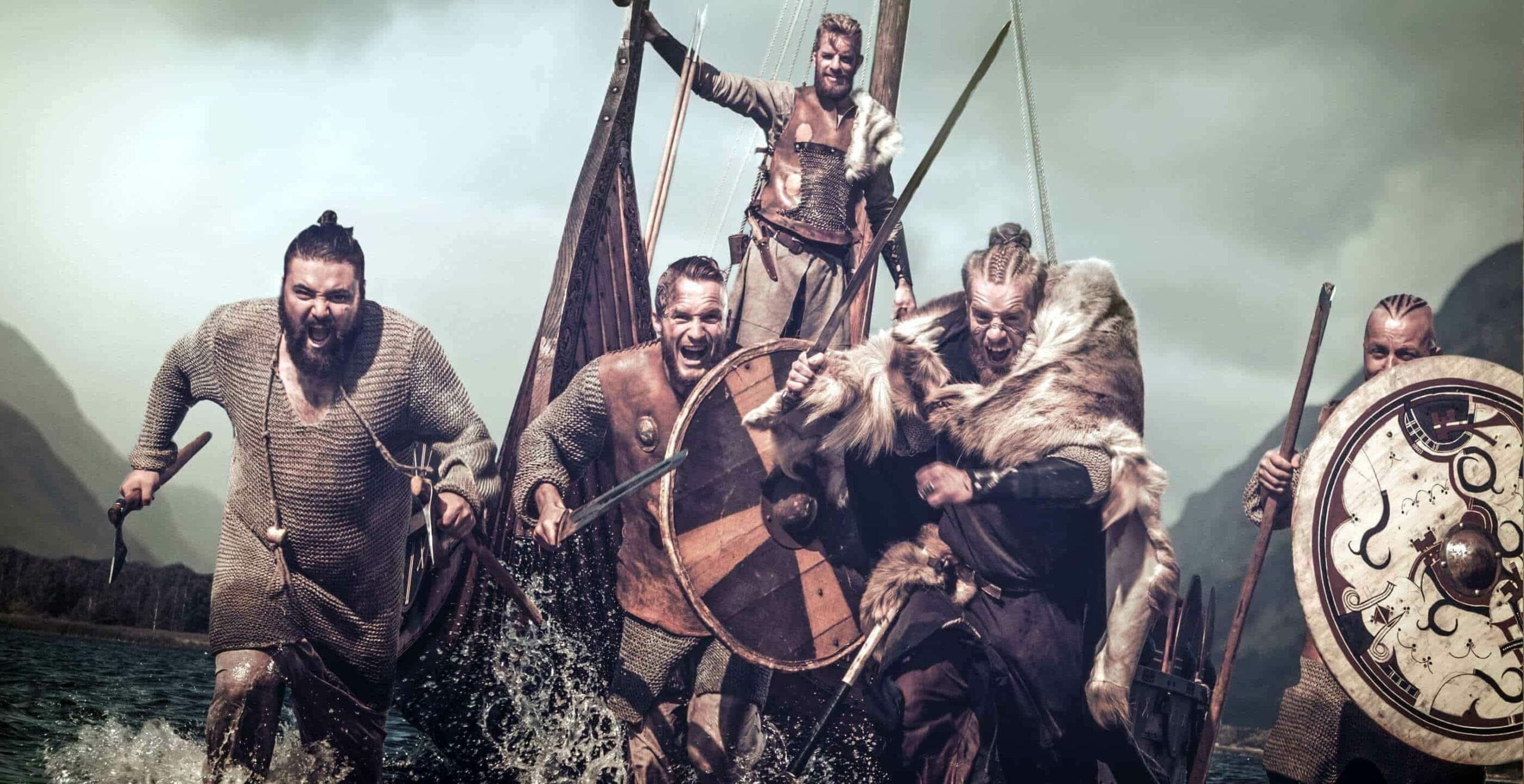
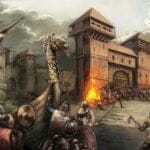
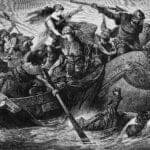

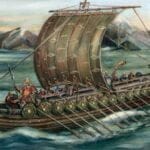
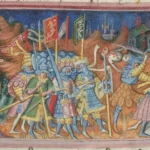











1 thought on “Ragnar Lothbrok: Unraveling the Legend of a Viking Hero”
Comments are closed.